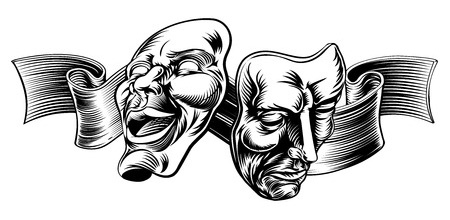Have you ever seen someone smile at you and questioned if they really meant it? Are they smiling because they’re genuinely happy and/or pleased to see you? Or are they putting on a show because that’s what they’re supposed to be feeling?
We can never really know the mind of another person but being able to read peoples’ expressions and tell if their emotions are congruent with the façade they’re putting forward is a very useful skill. Read on and we’ll look at how you can assess whether that smile is genuine – and hopefully put your paranoia to rest!

The Eyes
The most common advice when it comes to identifying a fake smile is to look at the eyes. When we are truly happy, we should really be smiling with our entire face and that means it should also reach the eyes. This will likely cause the eyes to squint slightly and crinkles to form in the corners (crow’s feet). Often the eyes will almost be closed over, while the eyebrows might move upward as well.
The Mouth
You can also look out for the smile itself. In order for the smile to cause the eyes to wrinkle, this might suggest that it has to be a particularly big and animated smile. And to an extent, this is true. Fake smiles are very often not as broad as real smiles – one of the main reasons people tend to fake smile is that they want to look good for the camera. Thus, a fake smile will often be shorter and won’t create the same number of dimples around the face.
Another thing to look out for with regards to the mouth is the bottom teeth. Usually the bottom teeth will not be visible during a genuine smile. While this won’t always hold true, in many cases, being able to see the bottom teeth is a sign that someone is trying to remember what a smile looks like, rather than just doing it naturally!
Microexpressions
Microexpressions are one tool that psychologists and police investigators can use in order to ascertain someone’s true emotions. These are expressions that last for only a split second (if not only a few milliseconds!) but which show an individual’s true emotion. For instance, if you are fake smiling, you may for one moment grimace or frown as you forget and lower your guard, or as an unconscious and unavoidable reaction to something that happens.
Psychologists record microexpressions by looking at footage from recordings and even use computers to detect them automatically. Recording these expressions without digital aid can be incredibly difficult then, so you will have to pay close attention and be very vigilant if you’re hoping to catch them!
Body Language
When reading an expression, it’s very important to look at this in the context of the broader body language. Body language can give us many cues as to a person’s true feelings and if this is not congruent with their expression, then it might suggest that they’re not being entirely honest about the way they feel.
For example, if someone is smiling but leaning away from you with their arms crossed, this might suggest that the smile is fake – it hasn’t reached their body. Conversely, if they’re smiling while leaning toward you and tilting their head to one side, this then suggests that they’re genuinely enjoying your conversation and laughing or smiling as a result of that.
Context
Context is a very important key word here and it goes beyond just the expression. Ask yourself: why would this person be smiling? Do they normally smile at this time?
Of course this alone isn’t enough to tell you if someone is really smiling – so the key is to use a combination of all these different factors. For example, if someone is smiling with their eyes open and their body language doesn’t seem quite right, you may then ask yourself: do they have motive to using a fake smile?
Individual Differences
And remember: everyone is different. Everyone smiles differently and at different times. Therefore, someone who smiles with their bottom teeth visible and their eyes wide open might not necessarily be faking it: they may genuinely smile that way.
As such, the very best way to tell if someone is faking their smile is to establish a baseline. Develop an idea in your mind of what someone looks like when they smile for real and then use that as a basis for comparison!



